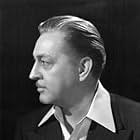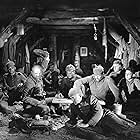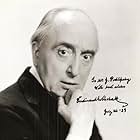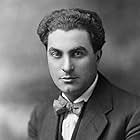Dr. Henry Jekyll experiments with scientific means of revealing the hidden, dark side of man and releases a murderer from within himself.Dr. Henry Jekyll experiments with scientific means of revealing the hidden, dark side of man and releases a murderer from within himself.Dr. Henry Jekyll experiments with scientific means of revealing the hidden, dark side of man and releases a murderer from within himself.
- Extra
- (uncredited)
- John Utterson
- (uncredited)
- Hyde's Landlady with Lamp
- (uncredited)
- Street Kid - Raises Fist to Mr. Hyde
- (uncredited)
- Patron in music hall
- (uncredited)
- Old woman outside of music hall
- (uncredited)
- Poole - Jekyll's Butler
- (uncredited)
- Policeman
- (uncredited)
Storyline
Did you know
- TriviaAccording to John Barrymore's biographer, Gene Fowler, a few years after making this film, Barrymore bought a house in Hollywood for $6,000. He got the seller to lower the price to $5,000 by appearing for the closing in his Mr. Hyde makeup.
- GoofsAfter the first transformation when Hyde attempts to change back into Jekyll, as he throws himself onto the floor, one of his prosthetic fingers can be seen to fly off.
- Quotes
Sir George Carew: In devoting yourself to others, Jekyll, aren't you neglecting the development of your own life?
Dr. Henry Jekyll: Isn't it by serving others that one develops oneself, Sir George?
Sir George Carew: Which self? A man has two two - as he has two hands. Because I use my right hand, Should I never use my left?
[Carew pointedly moves both hands indepemdently, making his point known to the whole table]
Sir George Carew: Your really strong man fears nothing. It is the weak one that is afraid of - - experience.
- Crazy creditsExcept for John Barrymore whose name appears above the title, actors were not originally credited in this movie at the start or at the end. Instead, four additional actors and their character names are credited in the inter-titles right before they appear on-screen.
- Alternate versionsIn 1971, Killiam Films, Inc. copyrighted a restored and tinted edition with an original theatrical organ score by Lee Erwin and a running time of 67 minutes plus a minute for new additional credits.
- ConnectionsEdited into Jekyll & Canada (2009)
There are some interesting parts to this adaptation, especially when comparing it to the later 1931 and 1941 versions. The competing beliefs between Jekyll and Dr. Lanyon are well rendered, as are those between Jekyll and Sir George, who is, apparently, based in Oscar Wilde's "The Picture of Dorian Gray". Additionally, the rationale behind Jekyll's experiment is altered more illogical by concerning it with one's soul, instead of the hypocrisy of the two-faced upper classmen who present themselves respectably for the public but also want to visit the prostitutes at night.
Anyhow, for better or worse, John Barrymore is restrained (considering the role and the film era). There's an odd giant spider nightmare in this one, too. The best aspect of this version, I think, is its horror atmosphere, with the studio sets of the fogy, lamp-lit London slums and even the detailed interior designs add something--production values that make this early entry stand out. Barrymore contributes to this, especially with the makeup to create his deformed Hyde that could rival Lon Chaney's creations.
To see a major point of difference between the three major Hollywood adaptations, as well as an indication of Hollywood's evolution and how this 1920 version stands out, compare Barrymore's horrific and grotesque Hyde with that of Fredric March and Spencer Tracy: notice how Hyde becomes easier on the eyes with each subsequent decade.
- Cineanalyst
- Sep 3, 2005
- Permalink
- How long is Dr. Jekyll and Mr. Hyde?Powered by Alexa
Details
- Runtime1 hour 9 minutes
- Color
- Sound mix
- Aspect ratio
- 1.33 : 1
Contribute to this page

































